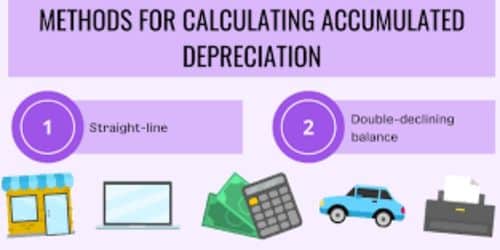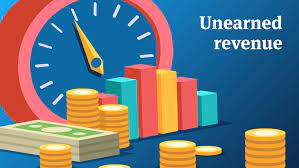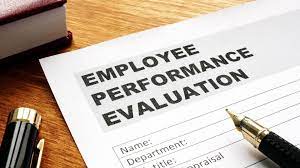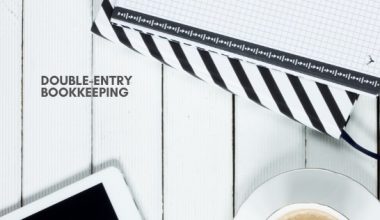The value of an asset goes down over time because of use, wear and tear, or becoming obsolete. This loss in value is called depreciation in monetary terms. When looking at your financial statistics, you need to understand what depreciation means. This article talks about the depreciation calculation example, its types, and its five causes.
What Is Depreciation?
Depreciation doesn’t cost money, so it’s called a “non-cash expense.” Even if the full cost of an asset is paid when it is bought, the cost is often recorded in installments for accounting purposes. Assets are important for a business because they keep making money for a long time. Still, a business can lower its taxable income by taking loss value deductions.
Depreciation is a way to write off the cost of a physical asset over the years, and the asset is expected to generate a return on investment or ROI. However, depreciation is a way to figure out how much the value of an asset has gone down because of use.
Depreciation is just a method used in accounting to show how much it costs to keep an asset running. It doesn’t matter where you got it, how it looks, or how long your company has been using it.
More Information
Depreciation is a cost, so when you add it all up at the end of the year, it will cut into your profit margins. Many business owners find it hard to understand the loss value expense on the income statement because it doesn’t match cash flow. Keeping these things in mind should help you get the idea.
Depreciation does not cost money. To put it another way, “depreciation” is never paid for with cash by a business. Instead, the cost of the asset is turned into income over the time it is used. Because of this, depreciation doesn’t always happen at the same time that a business buys an asset, even if the purchase is paid for in installments.
Depreciation is like the accrual-basis idea because it ties costs to a certain time frame. Whether the financial statements are made on a cash or accrual basis, this number will be written down.
What Is a Depreciation Example?
Using the straight-line depreciation method, an asset loses value at the same rate over the course of its useful life. Let’s use an example to show how much depreciation costs: a piece of equipment that costs $5,000, has no value as scrap, and will be used for five years.
Depreciable assets are things that lose value over time, like cars, houses, office furniture or equipment, computers, electronics, machinery, and equipment, and even some intangible things like patents, copyrights, and computer software. When a business buys something that will last for a long time, like a piece of machinery, it can write off the cost over time. This is called depreciation. The IRS calls cars, trucks, and furniture “capital assets.” They are also called “fixed assets.”
In the first year after buying $20,000 worth of equipment, a business can either write off the full purchase price or use depreciation to spread the cost out over the estimated useful life, which is seven years. That’s why so many business owners like to use depreciation. Most business owners would rather deduct a smaller percentage of the total cost because it has less of an effect on their bottom line.
The machinery has a salvage value of $5,000, which means that when its useful life is over, the company can sell it for that amount. The accountant uses these factors to figure out loss value expense, which is the difference between the original purchase price and the asset’s salvage value, divided by the asset’s useful life.
Even though the company paid out $20,000 in cash, the accountant does not have to write off the full amount in the first year. The business, on the other hand, pays for the costs every year.
Types of Depreciation
Capital assets and other things that bring in money can be depreciated in a number of ways that accountants use often. Some types of depreciation are given below:
#1. Straight-Line
The straight-line method is the very least that needs to be done to keep track of depreciation. The same amount of loss value is recorded every year for as long as the asset is used, or until its salvage value is reached.
#2. Declining Balance
Using the declining balance method can speed up the process of depreciation. For this method, you multiply the machine’s remaining depreciable value by the straight-line depreciation percentage to figure out its annual depreciation. Because the asset’s carrying value is higher at the beginning of the period, loss value costs are higher in the first year and gradually go down after that.
#3. Double-Declining Balance (DDB)
Using the double-declining balance (DDB) approach is another way to speed up depreciation. This rate is applied to the depreciable base (the asset’s book value) over the estimated time left for the asset to be used. It is calculated by doubling the asset’s useful life.
#4. The Sum of the Years’ Digits Depreciation
The double-declining method and the sum of the years’ digits (SYD) method are both used to figure out the accelerated loss value. Instead of writing down the asset’s book value, SYD works out a weighted proportion based on how long it can be used.
#5. Units of Production Depreciation
The units-of-production loss value method takes into account either the total number of hours an asset is used or the total number of units that will be made using the asset.
What Kinds of Assets Are Depreciable?
The following are assets that can depreciate below;
- Capital assets are all the things that a company owns that can be written off over time (called “property” by the IRS). Structures, changes you make to your property, cars, and different kinds of machinery and furniture are all fair game.
- Assets that are directly linked to making money can be depreciated by any business. The asset should be expected to last longer than a year and have a useful life that can be predicted.
Assets You Can’t Depreciate
The following are assets that can’t depreciate below;
- Things that will probably be out of date in a year (like office supplies).
- Instruments are used to build things that will last.
- Intangible assets are things like software, patents, and brand names.
- The land also can’t be depreciated because its value is always the same.
Depreciation Calculation
Depreciation is figured out every year for tax purposes. To figure out how much an asset has lost value, divide its original purchase price by how long it is expected to last, minus any salvage value. Depreciation is handled differently in accounting and taxes, but the math behind it is the same. By claiming loss value costs, your business may be able to pay less in taxes each year. The following are the different types of calculation for depreciation below;
#1. The Calculation for Straight-Line Depreciation
You can figure out the value of a depreciated asset by dividing its purchase price by the number of years it is expected to be useful. When an item has reached the end of its useful life, the amount of money it is expected to be worth is called its “salvage value.” Here’s how to figure it out: Depreciation cost = (original cost minus salvage value) / (asset useful life).
#2. Depreciation Formula for Double Declining
For the double-falling-balance method, you need to multiply the single-line method rate by two (the book value at the beginning of the year). Or you may use a double-declining calculator. You can figure out an asset’s “book value” by taking its original purchase price and subtracting the amount of loss value you’ve already taken from it.
#3. The Sum of the Year Digits in the Depreciation Formula
The sum of the year digits in the method, the SYD, is found by adding up all of the numbers for each year of the loss value. For example, to figure out the SYD for five years, you add 5 + 4 + 3+2+1=15. By dividing this total by the number of years shown on the graph, you can find the loss value rates for each year. The first year’s loss value rate is 33%, which can be found by dividing the first year’s digit (which is 5) by the SYD sum (15).
#4. How to Figure Out Depreciation for Units of Production
Depreciation cost = (total asset cost minus scrap value) x (total number of units manufactured / total number of units used over the asset’s lifetime).
What Are the Five Causes of Depreciation?
There are two types of things that can cause depreciation: internal and external.
The Internal Depreciation.
Here are some examples of internal causes of depreciation:
#1. Wear and Tear
The value of an organization’s assets goes down as they are used more and more. Wear and tear is the loss in value of a resource from the time it was bought until now. Even if you take good care of an asset and keep it in good working order, its value will go down over time.
#2. Exhaustion
The value of assets always goes down as time goes on. So, efficiency goes down. After a certain amount of time, an asset is no longer worth anything and is no longer useful. Surely, all things reach a certain age at some point.
#3. Depletion
Mines, quarries, and oil fields are all examples of wasteful natural resources. The value of assets that are slowly being used up will drop to zero at some point. All it takes to get through one is a slow, steady stream of them. The process of extracting is wasteful because it uses resources to make money.
#4. Deterioration
Depreciation is what happens to short-lived assets as they get older. This extra loss happens because these assets aren’t being fixed and kept up well enough.
External Causes of Depreciation
The following are the external causes of depreciation:
#1. Passing of Time
Most fixed assets have a certain time frame during which they can be used well. Things that can’t be moved, like leasehold property, are useless after a certain amount of time has passed. Depending on the laws in place, a company may only have a certain amount of time to use its assets in its manufacturing process. Patents and trademarks, for example, lose value over time.
#2. Obsolescence
The risk of obsolescence is that an asset might lose its value over time. This is a setback caused by things outside of the company, like a new idea, a new technology, a better way to make things, new rules, etc. Because of these things, it is cheaper to buy new assets even though the old ones still work. The constant changes in the market add to the feeling of unease. For example, if the number of people who want a product or service drops by a lot, it may no longer make economic sense to keep making or giving it.
#3. A Lasting Decline in Market Value
When an asset, like an investment, loses value on the market, its worth goes down. Simply put, it’s the drop in the value of an asset that won’t come back. The amount of the loss value should be worked out without taking into account any temporary drops in the value of assets.
#4. Natural and Uncontrollable Components
When assets are exposed to things like rain, sun, or accidents like fire, earthquake, flood, and tidal forces, their value goes down. When figuring out depreciation, these things are taken into account.
Is Depreciation an Asset or Liability?
Account balances don’t mean that you have to pay other people money, so this type of asset is not a liability. On the other hand, accumulated depreciation is only kept for accounting purposes and is in no way a financial obligation.
Is Depreciation a Credit or Debit?
Depreciation is an example of an expense that is taken out of earnings. On the balance sheet, the accumulated loss value is not shown as a separate line item. The amount is taken out of the contra-asset account, which makes the fixed assets worth less.
What Are the Four Factors of Depreciation?
There are;
- The price tag on the thing in question.
- The value of the asset after it has been broken down into its parts.
- a guess of how long an asset will be useful for what it was made for.
- When figuring out how long an asset will be useful, you have to take into account how old it is.
What Are the Six Methods of Depreciation?
There are as follow below;
- Straight-line depreciation method.
- Reducing balance method.
- Units of production method.
- Annuity method.
- Sum of years digits method.
- Double declining balance depreciation method.
Conclusion
In depreciation, amortization takes into account the fact that the value of intangible assets goes down over time. It’s a way for businesses to make money off their assets by spreading out the cost over time.
DEPRECIATION FAQs
What is a "entry of depreciation" in the journal?
A depreciation journal entry is a credit to the fixed asset account and a debit to the depreciation account to show that the value of an asset has gone down due to things like time, use, technology, etc.
What are the three main reasons why things lose value?
- Deterioration due to use and abuse.
- Perishability.
- Permission to Use.
What are the things that depreciation is made of?
- In accounting, fixed assets are written down over time due to depreciation.
- Assets suffer depreciation when their value declines over time or becomes obsolete.
- Depreciation continues until the asset’s useful life is over.
Related Articles
- STRAIGHT LINE DEPRECIATION: How to Calculate Straight Line Depreciation
- BONUS DEPRECIATION: Definition, Example, and Rate For 2022
- DEPRECIATION ACCOUNTING: Definition, Methods, Formula & All You Should Know
- ACCUMULATED DEPRECIATION: Calculation & Examples
- CAN LAND BE DEPRECIATED: The Ultimate Guide to Land Depreciation
- 15+ BEST PHONE NUMBERS for Business in 2022






